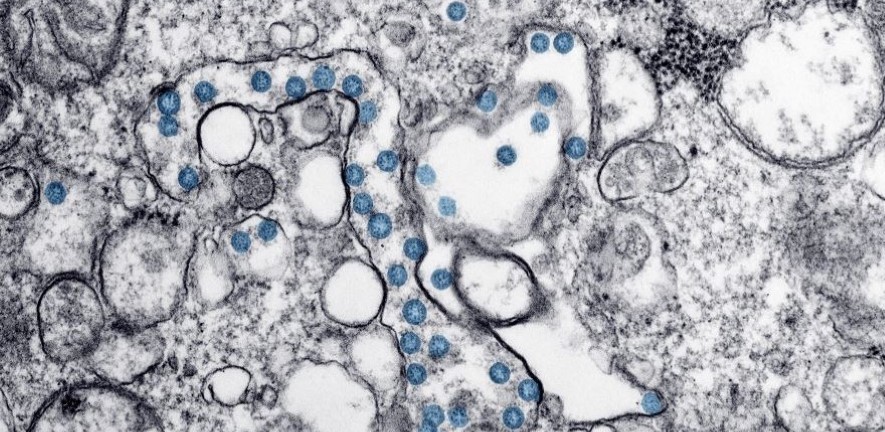
Submitted by Rachel Gardner on Mon, 27/07/2020 - 10:18
A mobile phone app that collects recordings of its users coughing and breathing has been used by researchers here successfully to predict whether people have coronavirus.
The researchers used the recordings collected by their COVID-19 Sounds App to train computer models to recognise the sounds of COVID-19.
They then evaluated how accurately the models were able to predict, from such sounds, whether someone was infected by the virus.
The models' predictions were based solely on detectable respiratory changes in users’ voices – such as dryer coughing. Nonetheless, the team found they could predict coronavirus infections with 80 per cent accuracy without the need for additional more standard diagnostic tests such as swabs and blood tests.
 The researchers will be discussing their initial results next month at the KDD 2020 conference run by the Association for Computing Machinery.
The researchers will be discussing their initial results next month at the KDD 2020 conference run by the Association for Computing Machinery.
"We don't want to overstate them," says Professor Cecilia Mascolo, Professor of Mobile Systems here in the University of Cambridge Department of Computer Science and Technology. "But the initial findings are encouraging, so we're cautiously optimistic."
She adds: "We're very grateful to everyone who's downloaded the app so far. But we now want to encourage many more people to do so, so we can gather further data." The COVID-19 Sounds App is now available to download for both android and iOS phones.
Using bodily sounds to automatically diagnose disease
Audio signals generated by the human body have often been used by clinicians to diagnose – or monitor the progression of – diseases. The body's catalogue of sounds includes sighs, breathing, the heart, digestive system and vibration sounds, as well as voice.
"We're very grateful to everyone who’s downloaded the app so far. But we now want to encourage many more people to do so, so we can gather further data."
Cecilia Mascolo, Professor of Mobile Systems.
Until recently, such signals were usually collected with manual stethoscopes during scheduled medical appointments. Research has now started to use digital technology to gather bodily sounds and run automatic analysis on the data.
The COVID-19 app is an example. It was developed with funding from the European Research Council and in collaboration between Cecilia Mascolo, Pietro Cicuta (Professor of Biological Physics at the Cavendish Laboratory) and Andres Floto (Professor of Respiratory Biology and Research Director at the Cambridge Centre for Lung Infection at Papworth Hospital).
The app was launched in April. Since then more than 8,000 people across Europe, the US, India, Bangladesh and Iran, have downloaded it and recorded themselves breathing in and out, coughing three times and reading a sentence.
The app also collects answers to questions about their medical history, whether they are showing any virus symptoms and if so, whether they have been tested (and what the test result was).
 Testing 'healthy' versus COVID-19-positive users
Testing 'healthy' versus COVID-19-positive users
At the time it was launched, testing was not widely available and most users said they had not been tested for coronavirus. But a small number confirmed that they had tested positive. Meanwhile other users were in countries (such as Greece) that at the time had no recorded prevalence of COVID-19.
This allowed the research team to compare two groups of users: one group of those who had tested positive for COVID-19, and a second group who were presumed 'healthy' as they came from countries with low or no prevalence of the virus and had no history or symptoms of the virus.
The researchers analysed the recordings of them coughing and breathing. In their evaluations, they employed audio features commonly used in sound processing as well as information extracted from a neural network trained by Google on millions of diverse sounds.
Their results showed that, using combined information from both breath and cough recordings, they were able to predict COVID-19 with nearly 80% accuracy.
They also compared healthy and asthmatic users with a cough against COVID-19 users with a cough. The results here reached 80% accuracy as well.
Encouraging more users to download the app
Now the scientist hope to go further with their research – which is why they are eager to attract new users to download the app.
Many of the 8,000+ current users have not been tested for the virus. "So, if we could recruit a similar number of people who have been tested very recently and know whether they are positive or negative for the virus, that would be very valuable," Cecilia says.
"We would also very much like people who have downloaded the app to go on reporting their symptoms. The app prompts you to report your symptoms every two days and if you have developed the virus over time, it would be great for us to have the data on how your respiratory sounds change from when you had no symptoms, to when you developed them, and then on to how you sound when you are recovering.
"To have that information on the progression of the disease and then the recovery from it would be amazing."
- Chloë Brown, Jagmohan Chauhan, Andreas Grammenos, Jing Han, Apinan Hasthanasombat, Dimitris Spathis, Tong Xia, Pietro Cicuta & Cecilia Mascolo. 'Exploring Automatic Diagnosis of COVID-19 from Crowdsourced Respiratory Sound Data'. https://arxiv.org/abs/2006.05919
- The Covid-19 Sounds App can be downloaded from https://covid-19-sounds.org/en/ , Google Play and the App Store.
- Image: Transmission electron microscopic image of an isolate from the first US case of COVID-19. Credit: CDC/ Hannah A Bullock; Azaibi Tamin.

